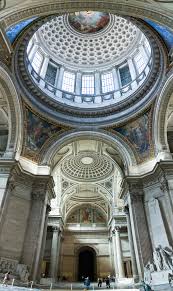
Rome under Emperor Constantine was divided in two by the Tiber River. Rome had seven major hills; the
Temple of Jupiter was on the Capitoline Hill and served as the main temple and center of religious cults of Rome.
The Palatine Hill, another major hill, was where the ruler lived in his palaces. Past the
Circus Maximus, an enormous chariot racing stadium, lay the wondrous Imperial Palace, where the emperor and his family lived as the central government. The Circus held many chariot races, animal hunts, parades, and religious processions. The emperor was a big supported of the games in the Circus and could go in his Imperial Box to watch them. In the city there was the
Aqua Claudia, which was a large aqueduct that supported the large Roman population by carrying water to the city through gravity. Other sites include the Septizodium, the Arch of Constantine, the Meta Sudans, and the Baths of Trajan, which was a great public bath. These structures show the Roman's phenomenal engineering skills. The Baths of Trajan was several bathing building enclosed in a garden-like courtyard and a wall.

 The Colosseum,
The Colosseum, a famous building in ancient Rome, was an oval amphitheater where civilians could watch gladiatorial combats, creative executions of criminals, and hunts of wild animals. The front seats were reserved for the emperor and his family, high officials, and priests. Behind them were the senators, wealthy businessmen, and free, land-owning citizens. The very top seats were for women, slaves, and foreigners who were considered unimportant and low class.
The Temple of Venus and Rome was actually two temples back to back, one part for worshiping Venus and the other part for the goddess Roma. Venus faces the Colosseum while the Roma faces the forum.
The Basilica of Maxentius was a big civil building used for courts.
The Roman Forum had a big, open public space used for public events like parades and speeches. The buildings around the open space were courthouses and temples. On the Forum plaza, there were monuments revering great men and leaders of Roman history.
The Pantheon, a building with eight columns at its front like a temple, surprisingly had a rotunda ceiling. The columns were enormous and must have required so much stone and manpower to build. The Pantheon was used to celebrate and worship the Roman emperors; it had statues of Julius Caesar and Augustus.
No comments:
Post a Comment